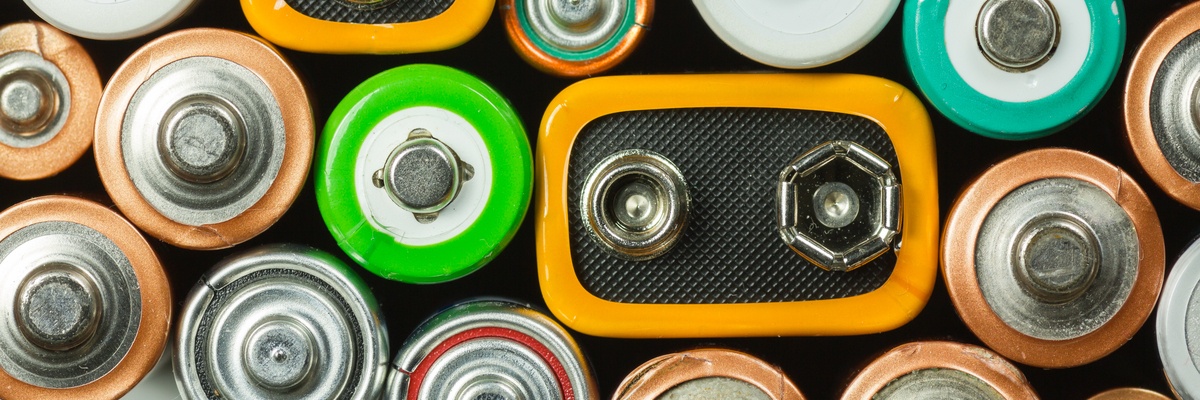

By: Eric Toro on January 16th, 2018
3 Emerging Battery Manufacturing Technologies
Advanced Battery Material | Battery Electrodes | Precision Expanded Foils
With the long-lagging lithium ion battery still dominating our devices. the battery market is working tirelessly to create a faster, safer, cheaper and more powerful future. While batteries have always taken a backseat to more prominent technology, the slimmest of devices still depend on them. And they might be the most outdated component within these groundbreaking innovations.
While rechargeable lithium ion is the lightest of the metal elements, most modern devices (and their users) have much to gain from a transformation in the battery market. For starters, their flammability and safety concerns have ruined product launches and tainted the reputations of their brands (hello Samsung and Galaxy Note 7).
The battery industry continues to work on improving the safety of lithium ion, as well as driving down its cost and increasing its power.
Want to stay up do date on these and other emerging battery technologies? Subscribe to our blog!
One battery manufacturer claimed to be able to charge a smartphone in five minutes and maintain its power for weeks without a recharge. Its CEO divulged only that the battery contained materials that spurred non-traditional reactions and hyper transfer of ions from the anode to cathode.
Whether this company’s claims or legitimate or not, clearly, there are several emerging technologies that could soon power your favorite devices.
#1 Silicon-Plated Batteries
With more and more vehicles are becoming electrified, the demand for good, big, high-performance power storage solutions is climbing. Silicon-plated batteries are one such solution.
These batteries are built as a stack of cells in a series, rather than as a group of cells in parallel. And the battery’s silicon plates – essentially very thin pieces of wire – connect one cell to the next and collect current. The density of the current and uniform temperature across the plate help prevent sulfation. And compared to traditional lead-based batteries, silicon-plated batteries used in electric vehicles are 40% lighter.
Solar panels and chip manufacturers have created huge quantities of the raw manufacturing materials used to create silicon plates. Thanks to the abundance of this supply, silicon-plated batteries also have the advantage of sourcing its materials at a fraction of the cost of other batteries.
#2 Expanded-Foil Batteries
Expanded metal foils are extremely thin sheets of ductile metal that have small openings throughout. These metals include copper, aluminum, zinc, stainless steel and are ideal battery components for several reasons.
First and foremost, they improve a battery’s electron flow. And with their single-unit structure, the foils wires will not unravel, maximizing its conductivity.
This technology also reduces the need for a binder to adhere the active material to the electrode surface. Many battery manufacturers that use an expanded foil as a cathode want to create a more symmetrical opening and thicker walls to make room for more active material. It also creates optimal adhesion and better packing of active material. The result is a better discharge rate, quicker recharge cycles and reduced delamination that could extend the battery’s cycle life.
Expanded metal foils can also be made as thin as 25 microns (0.001 inches), a much more difficult accomplishment with mesh. They’re also a more cost effective alternative to wired mesh or perforated or etched materials. Metal foils are multi-purpose too – They can even be used as support for active ion material and implemented as anode and cathode collector screens.
Expanded foil works well in many primary battery applications, including storage, and can be plated or coated depending upon the type of battery chemistry they are used in. There is no standard when it comes to the construction of expanded foil batteries, however. With different size, weight and conductivity needs, the right material depends on your needs.
#3 Liquid-Free Polymer Batteries
Traditionally, a battery uses liquid ions as catalysts for power generation. But researchers at Tufts University are reimagining what comprises a battery. They’ve developed a new, speciality low-cost material that’s almost plastic-like, and no thicker than a few playing cards.
Tufts’ solid polymer conducts ions at room temperature and allows lithium ions to flow from anode to cathode. Its researchers claim that its new electrolytes can work the same as a cathodes. They’ve also reported that their battery can be more stable and less flammable than traditional lithium ion batteries. Testing with the same voltage as a smartphone showed that the material was able to be cut and damaged without explosions, sparks or any of the ill effects a lithium battery might cause.
Of course, the battery’s impact would only go as far as its manufacturing realities. And its creators have stated that their battery can be produced in high volumes.
Which Battery Components Do You Need?
How are companies manufacturing these emerging batteries? Realistically, every battery is a different. Certain batteries require a metal or alloy that works best with the chemistry of the remain battery components or product it powers. Rechargeable lithium ion, for example, typically uses aluminium in cathode and copper in anode, while standard lithium ion batteries use stainless steel.
In addition to the chemistry of a battery, other important factors include:
- Corrosion resistance (in which nickel or titanium is best)
- Level of conductivity need
- Weight and/or thickness (to fit within a given device)
- Cathode thickness
Developing battery technologies will soon hit the market and improve the usability of our cars, smartphones, computers and much more. The questions are “when” and “which?”
If you want to learn more about emerging battery technology, subscribe to our blog for upcoming articles.

